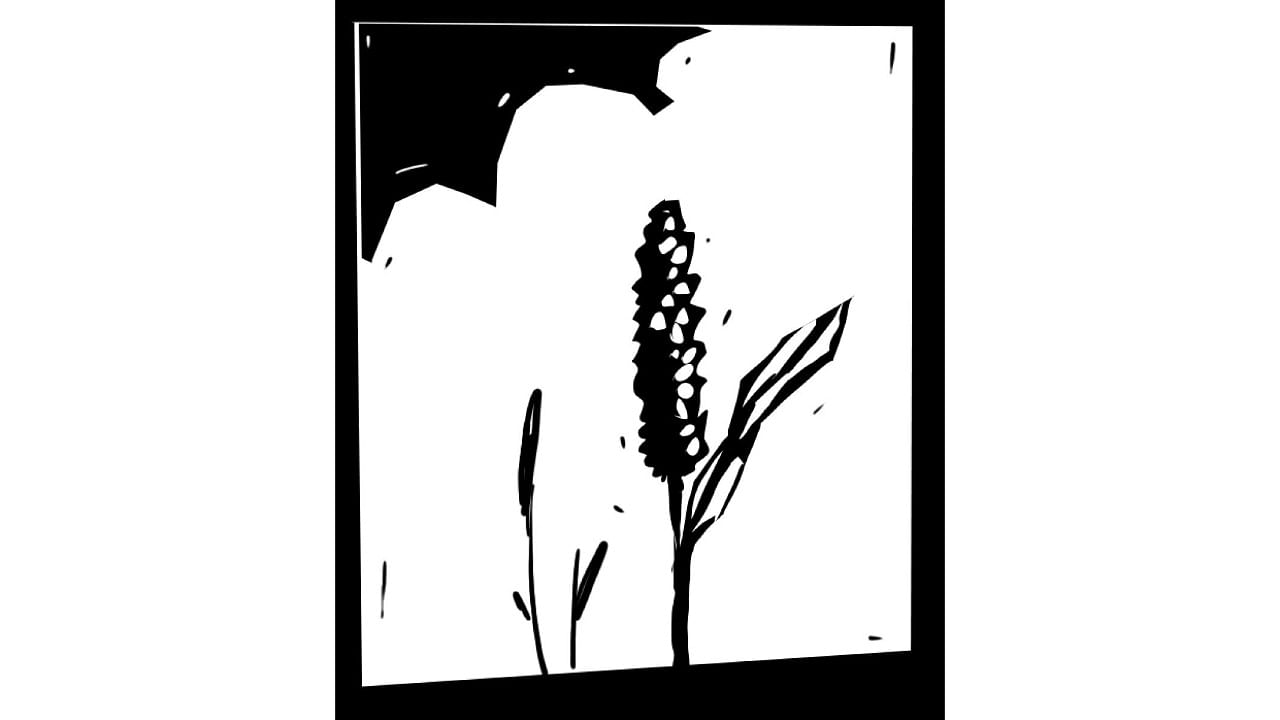
When we talk of millets, two very popular foods that come to mind are the ragi mudde of Karnataka and bajra roti of north India. Ragi here refers to the highly-nutritious Eleusine coracana, the finger millet, and bajra, the pearl millet, Pennisitum glaucum.
Supply creates its own demand. This theory, developed by the early 19th century French economist Jean-Baptiste Say, might sound foolhardy to the modern ear, but this is how India lost its diverse food basket to the “monocrop mindset” -- a perpetual rotation of rice-wheat crops -- of the green revolution.
In the 1960s, as the country struggled to increase its food production, the Indian agricultural fraternity was pushed, by the Americans, to think that the solution lay in the dwarf “miracle” varieties of wheat and rice.
Six decades later, we know how this chemical-centric farming, euphemistically called the green revolution, has ruined our soils, polluted and depleted our groundwater, and has been a cause of such dreaded diseases as cancer, due to the indiscriminate use of herbicides and pesticides.
Punjab was hailed as India’s “cradle of green revolution”; its Gurdaspur district now records a large number of cancer patients, earning it the “capital” of cancer in India title. At the time of the green revolution, India had no factories manufacturing chemical fertilisers. So, urea was imported in large quantities from the US, and India became the dumping ground for this fertiliser. Release of nitrous oxide from urea hydrolysis contributes as much as 35 per cent to global warming, and such other related factors have been extensively discussed in these columns earlier by the author. In their haste to produce more, Indian farmers gave their wide variety of millets a go by.
Why millets?
A comparison of the nutritive value of ragi and bajra with that of rice and wheat clearly shows the superiority of the former. Ragi, for example, contains 344 grams of calcium, important for bone health, compared to 33 grams in rice and 30 grams in wheat -- in other words, almost 1150 per cent (1146.7 per cent to be precise) more. As for fibre, ragi contains 55.6 per cent more fibre than rice and wheat. Fibre is an important component in human nutrition, and benefits diabetic patients immensely; this factor alone establishes the superiority of ragi.
India being the diabetes capital of the world, it is high time we popularised consumption of millets, especially ragi, over rice and wheat. The wise Kannadigas of yesteryears seemed to have known the nutritious value of the ragi mudde, but the ubiquitous idli-dosa, though not as rich in nutrition as ragi, have become more popular. Governments now will do well to promote millets.
A shining example of popularising millets lies in Odisha. In 2017 the Odisha State Government launched the Odisha Millet Mission (OMM) with an aim to bring millets back to its fields and the food-plates of India.
Through OMM, the state government encouraged farmers to grow millet crops that traditionally formed a substantial part of the diet and of the cropping systems of the tribal people. This highly varied group of small-seeded cereal crops not only require much less water than other cereals like rice and wheat, but are also a lot more climate resilient than the traditional cereals. OMM provides incentives for ragi farmers up to Rs 9,500 per hectare over a three-year period to shift to millet cultivation.
This included both free seeds and organic fertilisers. Public policy think tanks like Watershed Support Services and Activities Network (WASSAN) headquartered in Hyderabad and the Nabakrushna Chaudhary Centre for Development Studies (NCDS), Bhubaneshwar, which have partnered with the state government for the mission, conduct regular training programmes for farmers to improve ragi productivity and lower input costs. To complete the supply chain, the government has created an assured market for produce.
Farmers are paid a minimum support price (MSP) of Rs 3,377 per quintal (100 kg) of ragi, much more than the MSP of Rs 1,940 for paddy. During the last five years, Odisha has recorded a 14-fold increase in millet production, in particular ragi, from 3,333 hectares in 2017-2018 to 53,230 ha in 2021-2022. Average yield, too, has increased by 28 per cent, because of quality seeds and sustainable field practices.
In 2018 NCDS conducted a survey of households of farmers growing millets under the OMM and found that their produce per hectare had more than doubled from Rs 9,477 to Rs 20,701, and, income per hectare from Rs 3,957 to Rs 12,486. This clearly shows that, with effective backing for market access, even products from natural farming can be substantially profitable.
To ensure that the millets reach the food plates, the government regularly conducts campaigns and rallies to create awareness about the nutritive value of millets and to dispel the notion that millets are the food of the tribal people.
It is high time that New Delhi came out of the Baconian mindset that India’s food basket is just wheat and rice. A narrow focus on just two crops, rice and wheat, has been the second biggest tragedy of the green revolution, first being its disastrous consequences on the environment.
The current MSP structure, favouring rice and wheat, reflects a Baconian mindset whereby the obvious value of millets are ignored. New Delhi offers an MSP of Rs 1,940 and Rs 1,975 for wheat and rice respectively, for ragi it is only marginally higher at Rs 2,194. What prevents the government from following the OMM, which gives Rs 3,377 for ragi per quintal? Higher MSP for millets will have a stupendous effect not just on ragi cultivation in India, but in the long run, on the health and wellbeing of its population.
(The writer is former Professor, National Science Foundation, The Royal Society, Belgium)